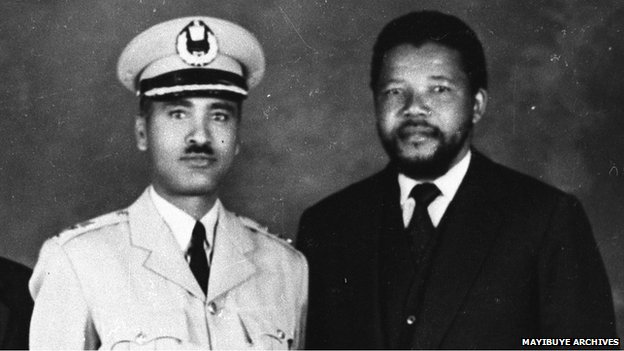In the annals of Africa’s struggle for liberation, the name Nelson Mandela shines as a beacon of strength and success. Yet, the story of his arduous journey is braided with threads of solidarity that stretch across the continent. Among these, his visit in Ethiopia stands as a pivotal chapter, a testament to pan-Africanism in action, and a potent reminder of the strength found in unity for a continent still navigating its path to full realization.
Early in 1962, under the mask of David Motsamayi and carrying an Ethiopian passport – a powerful symbol of a sister nation’s embrace – Mandela arrived in Addis Ababa. This was no mere diplomatic visit; it was a strategic mission. The African National Congress (ANC), having exhausted peaceful avenues against the brutal apartheid regime in South Africa, had resolved that armed struggle, through its newly formed Umkhonto we Sizwe (MK), was a necessary, albeit painful, path. Mandela’s presence in Ethiopia was a clarion call for support, a quest for the tools and knowledge needed to dismantle an unjust system.
Addis Ababa, under the leadership of Emperor Haile Selassie, was then a vibrant hub of burgeoning African independence. It was a place where the dreams of a continent shedding the shackles of colonialism were being articulated and nurtured. Mandela’s arrival at the Pan-African Freedom Movement Conference was a powerful moment. His impassioned address, delivered on Ethiopian soil, laid bare the exigency of armed resistance, resonating deeply with leaders and activists who understood the bitter taste of oppression.
Beyond the diplomatic halls, Ethiopia offered more tangible support. It was here, in the training grounds of Kolfe, that Mandela, under the guidance of dedicated Ethiopian military figures, including the respected Colonel Tadesse, received crucial instruction in guerrilla warfare. This training was not merely about acquiring combat skills; it was about imbuing a leader with the practical knowledge to guide a liberation movement, understand the intricacies of resistance, and inspire those who would risk their lives for freedom. Ethiopia became a crucible, shaping Mandela’s strategic thinking and bolstering his resolve.
Mandela’s time in Ethiopia, though relatively brief, was a profound investment in the future of South Africa and indeed, the continent. It solidified the understanding that the struggle against apartheid was not a solitary one but a shared burden, a collective responsibility of a united Africa. The Ethiopian passport he carried was more than just a travel document; it was a symbol of African brotherhood, a tangible manifestation of the continent’s commitment to the liberation of its people.
Today, as Africa continues its journey towards greater unity, prosperity, and influence on the global stage, the story of Mandela’s time in Ethiopia carries profound lessons. It reminds us of the power of pan-African solidarity, the importance of offering tangible support to those fighting for justice, and the transformative impact of shared struggle. Just as Ethiopia stood with the ANC in its darkest hour, contemporary Africa must continue to foster collaboration, share expertise, and stand united against the challenges of our time – be they economic disparities, political instability, or the lingering echoes of injustice.
The legacy of Mandela’s Ethiopian experience is not just a historical footnote; it is a vibrant source of inspiration for today’s Africa. It underscores the fact that our strength lies in our unity, our progress is intertwined, and our collective future depends on our unwavering commitment to supporting one another. The echoes of Mandela’s footsteps in Addis Ababa serve as a powerful reminder that when African nations stand together, they can shape history and pave the way for a brighter tomorrow for all. Let us draw strength from this powerful chapter, and continue to build an Africa where solidarity, justice, and progress are the guiding principles.








